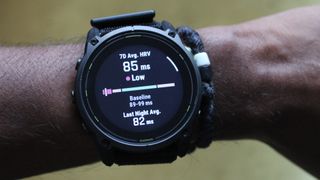
It was just two years ago that a tiny robotic manta ray became the world's fastest-swimming soft-bodied robot. Well, one of its descendants has now smashed that record – and it uses energy than its predecessor, to boot. The 22.
8-mm-long was designed by Assoc. Prof. Jie Yin and colleagues at North Carolina State University.

It featured two flexible polyester manta-ray-like wings, which were actually the left- and right-hand ends of a single curved bistable structure. Bistability refers to a tensioned structure's ability to remain in either of two positions without requiring any energy to do so – a hair clip is a good example of a bistable structure. The middle of the robot's bistable wing structure was sandwiched between top and bottom soft silicone pneumatic actuators.
When air was pumped into the top actuator, it buckled upward and pulled up on the middle of the wing structure, causing it to "snap" into a position that drew the two wings downward. When the top actuator was deflated and the one was inflated, the structure snapped in the opposite direction, bringing the wings back up again. The mechanism is demonstrated in the following video.
By activating the two actuators back and forth in this manner (via an external air pump), it was possible to flap the wings fast enough for an average swimming speed of 3.74 body lengths per second. According to the scientists, this was about four times faster than what had previously been possible for soft-bodied swimming robots.
In the 68-mm-long robo-manta, Yin and his team did away with the bistable design along with the bottom actuator. The flexible wing structure is now monostable, meaning it will always revert to just one position – curved down in the middle with the wings up – when no energy is applied. Upon being inflated, the single top pneumatic actuator curls downward and pulls down on the middle of the wing structure, causing the wings to snap downward.
As soon as the actuator is allowed to deflate, however, the elastic restoring force of the structure causes it to snap back to its default position, drawing the wings upward in the process. So, whereas the original robot had to take the time and energy to alternately inflate/deflate two actuators per up-and-down wing-flapping cycle, the new bot only has to activate one. This improvement gives the robot an average swimming speed of a whopping 6.
8 body lengths per second, while consuming 1.6 times less energy than the original. Additionally, the new design allows the bot to move vertically within the water column simply by varying its swimming speed.
"When the robot’s fins are at rest, the air chamber is empty, reducing the robot’s buoyancy. And when the robot is flapping its fins slowly, the fins are at rest more often," says PhD student Haitao Qing, first author of the study. "In other words, the faster the robot flaps its fins, the more time the air chamber is full, making it more buoyant.
" The scientists are now working on a method of laterally steering the robot, with an eye toward future applications such as ocean exploration and aquatic wildlife observation. You can see in it action, in the video below. A paper on the study was recently published in the journal .
Source:.















